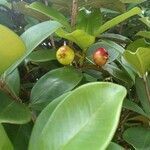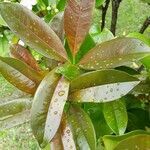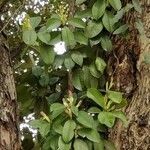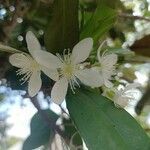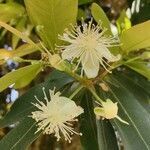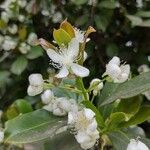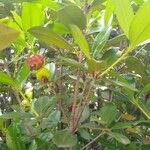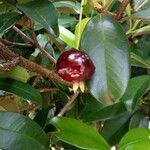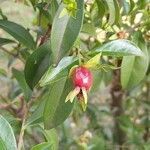A slender ornamental tree 7.5–15 m tall with reddish young shoots.. Leaves ovate or oblong-obovate, 6.3–16 cm long, 2.5–6.3 cm wide, obtuse at the apex, cuneate at the base, coriaceous; petiole 1 cm long; flowers solitary; pedicels 2.5–5 cm long with 2 basal narrowly elliptic densely glandular-pustulate bracts 1.3 cm long.. Calyx-lobes green.. Petals white, 1.5 cm long; fruit green turning bright red to dark purple or nearly black, oblate, 1.2–2 cm diameter with persistent sepals 1.25 cm long, edible.
